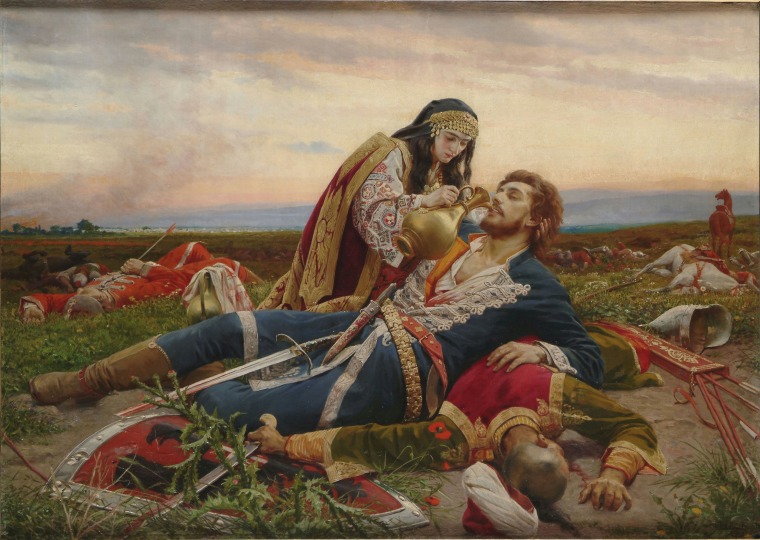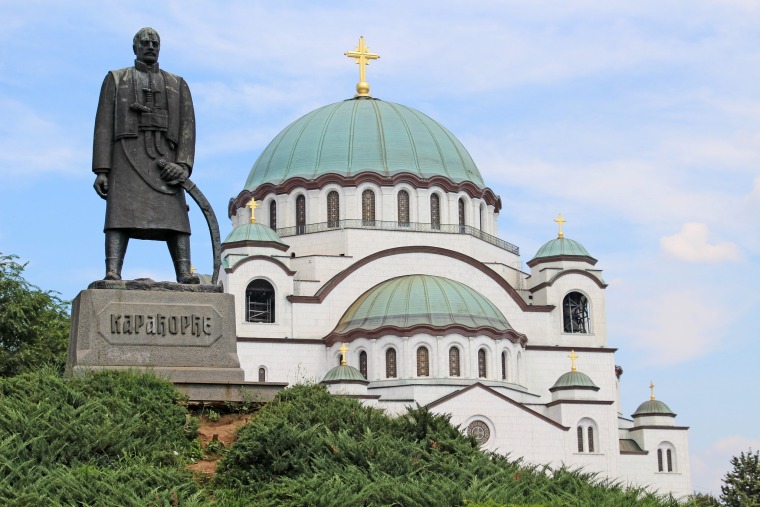

These photos have both sad and shocking stories behind them, and they only go to show that a picture is worth a thousand words. We would like to present to you photographs of the most difficult and distressing events that completely shook Serbia and changed the course of its history.
1. An Assassination That Caused a War (1914)
One of the photographs that shook and shocked not only Serbia, but the whole world as well, is the one that precedes the very moment when Gavrilo Princip assassinated Franz Ferdinand, the heir presumptive of the Austro-Hungarian throne.

After this event the face of the Earth changed forever. The Austro-Hungarian Empire declared war against Serbia, and other major powers joined the war soon after. The First World War began.
2. The Golgotha Through the Albanian Mountains (1915/16)
Of all the horrible photographs depicting the torture and loss brought on by the Great War, the ones which eternalised the Albanian golgotha are the worst for the Serbian people.

The Albanian golgotha is the name given to the historical event of the Serbian army’s retreat through the mountains of Albania and Montenegro. This event took more tens of thousands of lives, more than 240,000 to be precise. Most of those who survived looked like the soldier in the photo above.
3. The Murder of the First King of Yugoslavia (1934)
An event which shook the whole Yugoslav public was the death of King Aleksandar I Karađorđević. He was assassinated by Vlado Černozemski, a member of the Internal Macedonian Revolutionary Organization, in Marseilles in 1934.

This event was considered a heroic act in some countries and as an act of terrorism in other. The thing that’s certain is that it shook Serbia and caused significant changes in the world in the period that followed.
4. An Unimaginable 440 bombs in Only a Couple of Days (1941)
According to unofficial estimates this is the number of bombs that showered on Belgrade in the first days of World War II. The capital of Serbia is one of the most frequently war devastated countries in Europe.

The biggest destruction the capital of Serbia has ever “lived through” was on April 6, 1941. On this day the German aviation forces numbering over 350 aircrafts, without any prior warning, bombed Belgrade at 6:30 am. Ruin, thick smoke and ashes were all that could be seen in Belgrade in the following days.
5. Seven Days of Student Demonstrations (1968)
 The famous student demonstrations in Belgrade began in the night between June 2 and 3, 1968.
The famous student demonstrations in Belgrade began in the night between June 2 and 3, 1968.
A wave of democratisation which was spreading through Europe came to Serbia.
The photographs from the time captured the unforgettable moments of the biggest and longest protest of the students of the Belgrade University.
A decision on the general strike of the University was made, and the cancellation of all lectures and exams was put into effect.
Student watches were also organised. The demonstrations ceased after Tito addressed the students.
After they realised they’ve achieved all that they could from this event, they turned the strike into a manifestation with a song.
6. The Biggest Meeting of Heads of States in the History of the World (1980)
… also known as the funeral of Josip Broz Tito. Yes, it was this event that caused the highest number of dignitaries to meet at a funeral and at the same time shook the whole Yugoslavia, the region and according to international media – the world.

After Tito’s death, the train carrying his body arrived to Belgrade. In front of the National Assembly of Yugoslavia, people gathered to pay their respects, waiting for up to 15 hours. On May 7 over 200 foreign delegations bowed to his casket. On May 8 Tito was laid to rest in the House of Flowers on Dedinje.
7. The Largest Ethnic Cleanse Since World War II (1995)
With a silent international approval, in an action performed by the Croatian army and police, in only a couple of days more than 250,000 people were chased out of their homes and lands they’d occupied for centuries. This operation known as “The Storm” (“Oluja”) claimed around 2,500 lives as well as 25,000 Serbian houses and hundreds of other facilities.

Serbs were banished from north Dalmacija, Lika, from Banija and Kordun, as well as from Serbian parts of Republika Srpska. Neverending queues of Serbs are one of the saddest sights which had a huge affect on Serbia.
8. Merciful Angel (1999)
On March 24, 1999 the deafening sound of sirens announced the beginning of the “Merciful Angel” operation also known as the NATO bombing of the federal Republic of Yugoslavia. In the 78 days that were to follow over 30,00 airstrikes were carried out, around 50,000 devastating projectiles were fired and more than 2,500 lives were lost.

Upsetting pictures of human loss, destruction, explosions, fire and ashes just kept on coming.
9. The Fifth of October (2000)
One of the most important dates in Serbian history, especially in the second half of the 20th century, is the famous October 5, 2000 otherwise known as the 5 October Overthrow. On this day mass demonstrations began against Slobodan Milošević’s regime.

Molotov cocktails, dense clouds of coal black smoke, gunshots and chants, these are the images that marked the beginning of democratic change in Serbia as well as a new era in its more recent history.
10. The Murder of the First Prime Minister of the Republic of Serbia (2003)
The gunshots heard in front of the main Serbian government building on March 12 shocked everyone. The photograph showing Đinđić’s security trying to save his life deeply saddened Serbia.

After this tragic event occurred a state of emergency was declared in Serbia and the famous operation “Sabre” (“Sablja”) commenced. During this operation hundreds of criminals were arrested.
11. “The March Pogrom” (2004)
Photographs showing Serbian monasteries and churches in ruins are certainly some of the most distressing images in Serbian history. Namely, in the Albanian riot against Serbs living in Kosovo 19 civilians were were killed, 950 people were injured and 4,000 were driven from their homes.

More than 900 facilities, including 35 Serbian churches and monasteries, were destroyed. Amongst them was The Mother of God Ljeviška church in Prizren which had been built in the 13th century and placed on the UNESCO’s World Heritage list.
12. The May Floods (2014)
The floods that caught Serbia unprepared, left a trail of distressing pictures of flooded houses, destroyed belongings, distraught people and frightened animals.

What gave people hope in such a desperate time were acts of kindness and solidarity which came from all directions. The floods were described as the worst natural disaster that had ever struck Serbia, and the government declared 3 national days of mourning.









